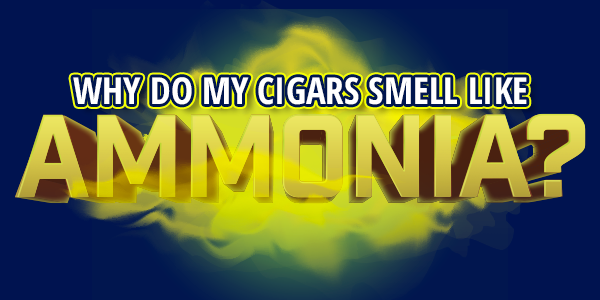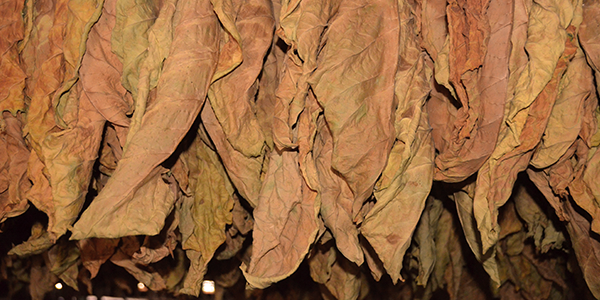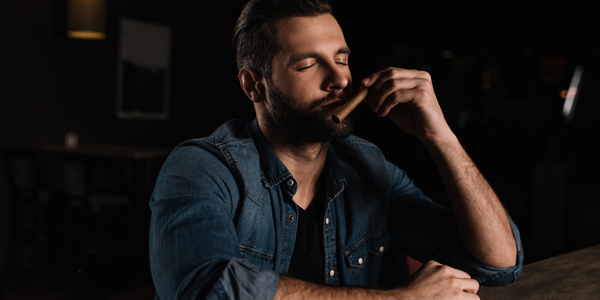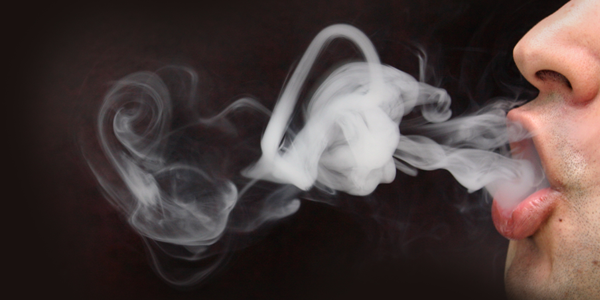Why Cigars Smell Like Ammonia
All premium tobacco smells like ammonia at some point – during the fermentation process, in particular. To make cigars by hand, the tobacco is planted, harvested, cured, and then fermented for many months or years, before it’s rolled into a cigar. If you visit the fermentation room in a cigar factory, where the tobacco is stored and rotated in piles of leaves, called pilones, at high temperatures, you will encounter a potent aroma of ammonia – enough to sting your nostrils and eyes.
Ammonia naturally surfaces in premium tobaccos during the fermentation process, but fermentation is intended to eventually eradicate any traces of ammonia and any other impurities that can interfere with the taste of premium tobacco long before it reaches the cigar roller’s hands. If you just bought a box of cigars and they reek of ammonia when you open the box, they could need more rest before you smoke them. Here’s why cigars sometimes smell of ammonia and how to remedy the situation.
Fermentation
After the curing process is complete, premium tobacco is fermented. The leaves are carefully moved from the curing barn and assembled in short piles, called pilones, which generate lots of heat. When temperatures in the pilone reach 95˚F, the pile is disassembled to remove excess moisture and allow the leaves to cool down. The pile is then reassembled, and the process is repeated. Tobacco fermentation is labor intensive and time-consuming. Some cigar-makers ferment their tobacco for 30 days – for a single fermentation. Others spend several months or even years fermenting tobacco in multiple stages.
During a second fermentation, the leaves are classified and stored in much larger piles, four to six feet high, and the temperatures reach 108˚F to 140˚F before they’re disassembled. Stronger, more intense leaves on the tobacco plant, like Ligero, which grows at the top, require longer fermentation periods because they are the most dense. Lower leaves, such as Seco and Volado, take less time. Some manufactures, like the Garcia family, makers of My Father and La Aroma de Cuba cigars, insist on a third fermentation to fully absolve the tobacco of impurities and impart an aged taste.
Fermentation is critical because toxins like ammonia and other impurities are removed during the process. The longer the tobacco is fermented, the smoother it will be when it is rolled into a cigar. Stacking, rotating, and warehousing large inventories of pilones takes time, costs money, and is reflected in the retail price you pay for a cigar. It’s reasonable to expect pricier cigars like Padrón 1964 Anniversary and Ashton ESG go through an extensive fermentation.
How to Get Rid of Ammonia Smell
The only way to combat the smell or taste of ammonia in a cigar is to continue to age it. Sometimes a few weeks will make a difference, but often months are required. It’s best to isolate cigars that bear an ammonia smell from your humidor and age them in a separate humidified environment where they can continue to shed impurities without affecting the rest of your collection.
Some aficionados believe that dry-boxing cigars – storing cigars in an empty wooden cigar box with no humidification – for a few days is an effective way to remedy the smell of ammonia. In the best case scenario, the ammonia aroma will dissipate over time, but that doesn’t mean the cigar’s flavor profile will improve; simply the ammonia smell will go away. Your best bet is to avoid cigars that smell of ammonia altogether.
Bragging Rights
If there’s one rule the best cigar-makers follow, it’s this: invest in tobacco. The Fuentes, the Garcia family, the Padróns, the folks at Oliva, and dozens of other top-tier manufacturers became successful because they grow and buy a lot of tobacco and they store and age it for very long periods of time. They keep enough tobacco on hand to continue production in the event of a hurricane or natural disaster. They keep enough tobacco on hand they’ll never ever have to sell a cigar that’s made from young, under-fermented tobacco that smells like ammonia.







